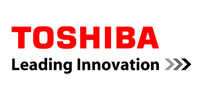TOKYO--August 21, 2013: Toshiba Corporation (TOKYO:6502) today announced the launch of "TB9080FG", a three-phase brushless motor pre-driver IC for general automotive applications, which realizes low-noise and highly efficient motor operation through a sinusoidal wave drive and lead angle control1. Mass production is scheduled to start in September this year.
Engine noise in vehicles equipped with an idling reduction system disappears when the system is activated, with the effect of making noise from car air conditioners much more audible. Demand for a method to cut air conditioner noise is increasing, but mechanical solutions, such as optimization of blade shape in blower fans, the major noise source, and noise absorbent material in air ducts, fall short of realizing low noise.
"TB9080FG" replaces 120-degree rectangular wave control with sinusoidal wave control that cuts noise from the blower fan motor electronically. Optimized lead angle control also contributes to the increased efficiency of the motor operation.
Key Features of the Product
1.
Sinusoidal wave control reduces noise
Use of a third harmonic
wave
realizes sinusoidal wave control, contributing to quieter motor
operation.
2. Digital filter prevents overshoot2 at motor
start-up
Digital
filter circuits control external PWM3 signal, securing a
slow
motor start that avoids overshoot.
3. Built-in data table for 16 kinds of rotation numbers
A
built-in
data table supports use of motors with a range of pole numbers, from
4
to 12 poles.
4. Optimized lead angle control realizes high efficiency
Motor
current is measured and the lead angle automatically controlled in 1
degree increments, contributing to motor operation efficiency.
5. Motor speed feedback control improves the accuracy of rotation
speed
Motor
rotation speed is controlled by comparing the target figure and the
signal from external hall element sensors4.
|
Main Specifications |
||
| Part Number | TB9080FG | |
| Sample Price | 400 Yen (Tax Included) | |
| Mass Production | September, 2013 | |
| Mass Production Volume | 3 Million pieces per year | |
| Channels | 6 channels (Boost DCDC high side: 3 channels, low side: 3 channels) | |
| Standby Current | 50μA (Sleep mode, Ta = 25�C) | |
| Operating Voltage Range | +7 to 18V | |
| Operating Temperature Range | -40 to 125�C | |
| Speed Input Signal | External PWM ratio or DC input voltage value is used as the targeted rotational speed to which the IC compares the rotational speed (signal from Hall element) and control the motor speed. | |
| Drive Control | Sinusoidal wave drive control through generation of third harmonic wave | |
| Detection Circuits | Over current detection, over temperature detection, over voltage detection, low voltage detection of VCC, internal and external temperature detection, external temperature limiter circuit and motor lock detection | |
| Diagnostic Circuits | Output of abnormality information using 10Hz signal and preliminary fixed PWM duty ratio in accordance with each abnormal mode. | |
| Package | LQFP64 (12mm x 12mm x 1.4mm) | |
|
Notes: |
||
| [1]: |
A method to improve motor drive efficiency by controlling the phase difference of current and voltage. |
|
| [2]: |
The signal or value exceeds its target figure temporarily. |
|
| [3]: | Pulse Width Modulation. A method to control torque and rotation speed of a motor by changing the on and off time in a constant period. | |
| [4]: | A magnetic sensor to detect rotary position and rotation speed. | |
Customer Inquiries:
Automotive Sales and Marketing
Department
Tel:
+81-3-3457-3428
Information in this document, including product prices and specifications, content of services and contact information, is current on the date of the announcement but is subject to change without prior notice.
About Toshiba
Toshiba is a world-leading diversified
manufacturer,
solutions provider and marketer of advanced electronic and electrical
products and systems. Toshiba Group brings innovation and imagination
to
a wide range of businesses: digital products, including LCD TVs,
notebook PCs, retail solutions and MFPs; electronic devices,
including
semiconductors, storage products and materials; industrial and social
infrastructure systems, including power generation systems, smart
community solutions, medical systems and escalators & elevators; and
home appliances.
Toshiba was founded in 1875, and today operates a global network of more than 590 consolidated companies, with 206,000 employees worldwide and annual sales surpassing 5.8 trillion yen (US$61 billion).



